Ressources dossier
Food, Global HealthAccelerating the transitions
Published on 18 January 2023
Acting on prices. This leverage seems to be essential for public policies in the face of consumers for whom price is a major criterion.
Taxes and their effects
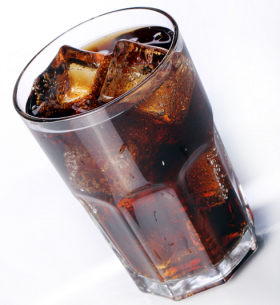
The first strategy is to tax products that are less healthy because, according to economists, a taxation policy can bring about a change in consumer choices at little cost. This is the principle behind the “soda tax” introduced in France in 2012, then revised in 2018, whose objective is to encourage a reduction in the consumption of sugary drinks. Adopted in some 40 countries, this tax seems to be playing its role, particularly in the countries that are most fond of soda, such as the United States and the United Kingdom, where consumption of these drinks has fallen.
Economists at INRAE have shown that these taxes could have a significant impact on purchases, but this varies depending on the type and level of tax. For example, the UK tax, which is proportional to the sugar content of the product, led to a significant decrease in the purchase of these drinks, whereas the French tax, which was introduced in 2012 and was independent of the sugar content, led to little change in consumption. France therefore adopted the same taxation system as the UK in 2018. In addition to questioning purchasing decisions, these taxes reinforce the messages about the health consequences of excessive consumption of soft drinks. The introduction of this type of tax may also have the effect of encouraging manufacturers to reduce the sugar content of the products they market.
Taxes and subsidies must take into account issues of social and economic inequality.
This leads to more ideas. What if products that have a negative impact on the environment were also taxed? Cécile Bonnet, an INRAE economist at the Toulouse School of Economics (TSE), has studied the effect that the introduction of a carbon tax on meat could have: the research shows that a tax indexed to the CO2 emissions from meat production would lead to an increase in prices and therefore a decrease in the consumption of products with a greater impact in terms of GHG emissions. However, taxing products means passing on the costs to consumers, with greater economic consequences for the poorest households. A complementary strategy could therefore be to subsidise healthy products. A study shows that in France, subsidising fruit and vegetables by 20% would increase their consumption by 8 to 10%.
Healthy food for all
seems to be the crux of the problem, especially as the poorest households are the biggest consumers of products of lower nutritional quality. Nicole Darmon, an epidemiologist at the MOISA unit in Montpellier, demonstrates as part of the Opticourse project that healthy and sustainable eating is possible even on a small budget. A field trial, in partnership with two supermarkets, showed that affixing an “Eating great” logo can guide customers towards inexpensive and nutritious food choices and influence purchases. At the same time, researchers and facilitators organised fun group workshops focusing on taste, nutrition and price, offering tips on how to improve the nutritional quality of purchases without breaking the bank, while still indulging in taste. In the same vein, the Dijon metropolitan area (read interview of Sophie Nicklaus) is considering experimenting with food vouchers to help the most disadvantaged people buy fruit, vegetables and legumes.
Informing and raising awareness for better guidance
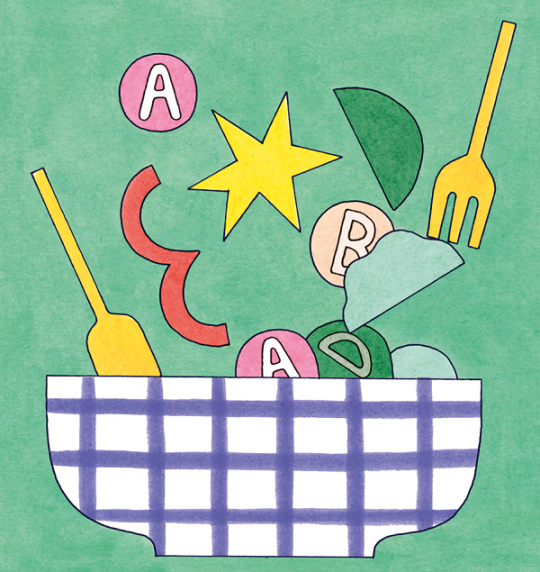
Informing and raising awareness are the key words in public policies to guide consumers towards a more sustainable diet. To this end, the French state relies on the National Nutrition and Health Programme (PNNS). Launched in 2001, this is a public health plan aimed at improving eating habits and thus the health of the population. It is deployed through various actions, including the introduction in 2017 of a display system called Nutri-Score, in order to enable consumers to make informed choices between products in the same category. Developed by researchers from various organisations including INRAE, this score is determined by a calculation that classifies the nutritional data of foods per 100g of product into five categories, from A to E (green to red). Researchers have shown that the Nutri-Score can improve the nutritional quality of purchases by 4% and that the easier the label is to understand, the more effective it is! However, to be even more effective, all brands should adopt it, which is still far from being the case. As European regulations currently prohibit the imposition of this labelling on brands, only a fraction of them have committed to implementing it.
A study by the Food Quality Observatory (Oqali, located at the INRAE centre in Ivry-sur-Seine) shows that the market share of products with Nutri-Score varies from 10 to 50% depending on the food sector.

The Nutriscore
In France, 500 companies have adopted the Nutri-Score display, representing 50% of the food market share.
> Of all the products rated, 31.7% are classified A, 9.6% are classified E.
> For some fatty products such as vegetable oils (like olive and hazelnut), the best possible score is C.
> 94% of the French are in favour of the Nutri-Score.
> 1 French out of 2 declares having changed at least one purchasing habit thanks to Nutri-Score.
Displaying the environmental impact of products?
As the Nutri-Score makes it possible to guide purchases towards products that are good for health, one might wonder about a possible display of the environmental impact of products. This is a desire of the public authorities who, in the context of the law on the fight against food waste and the circular economy, have launched an 18-month experiment to define an environmental display for food products by the end of 2021. There are many systems in various formats (score, label and so on) that take into account a wide range of indicators, often including the carbon footprint. In this context, INRAE scientists are studying which system would be the most effective in guiding consumers. The results of the Lab2Green project show that environmental labelling, regardless of its format, has a significant effect on the environmental quality of consumers’ purchases. Moreover, the traffic light approach is more effective than a quantitative model (such as displaying the amount of CO2 emitted). It remains to be seen what the impact would be of placing an environmental label alongside the Nutri-Score label, and what choices consumers would make in the case of antagonistic displays. In parallel with these studies, ADEME and INRAE have developed the Agribalyse database, which provides information on the environmental impact of a product, from agricultural production to its purchase or preparation by the consumer. This database could be used as a basis for the display system that will be adopted.
The issue of awareness-raising messages
It is also within the framework of the PNNS that awareness-raising messages are developed: “Eat at least 5 fruits and vegetables a day”, “For your health, avoid eating too much fat, too much sugar, too much salt”... We have all heard these messages, but do they actually contribute to changing our eating habits? According to Vincent Requillart, an INRAE economist at TSE, these information campaigns generally have a positive effect on consumption, but their impact remains relatively modest.
Campaigns such as “5 fruits and vegetables a day” can temporarily increase the average consumption of fruits and vegetables by 5%. In the long term, they can thus contribute to changing social norms regarding food. However, it should not be overlooked that these norms may appear contradictory to the dietary practices of certain populations.
As Faustine Régnier, an INRAE food sociologist from the Social Sciences and Food unit (ALISS, Ivry-sur-Seine), points out, “for people from low-
income backgrounds, food is an area of freedom, sometimes the only one, where they feel they can make a choice, express their tastes, and thus compensate somewhat for other daily constraints, which therefore limits the impact of awareness campaigns”.
For step-by-step changes
For Nicole Darmon, this implies working on a complementary approach in order to make step-by-step changes possible. For example, gradually introducing dried pulses into one’s diet or preferring whole grains, and thus moving towards a more sustainable diet without upsetting one’s habits. It is also a question of supporting transitions through actions that are close to the population: cooking workshops, community gardens, collective workshops to guide purchases. What about food-related mobile applications to support people in these steps? An estimated 30% of the population has already downloaded one. Once again, however, it is the people on the lowest incomes who use them the least: technical barriers linked to poorly performing equipment are compounded by financial and time constraints, little knowledge of digital technologies and, in migration situations, a poor command of spoken and even more so written French.
Educate first
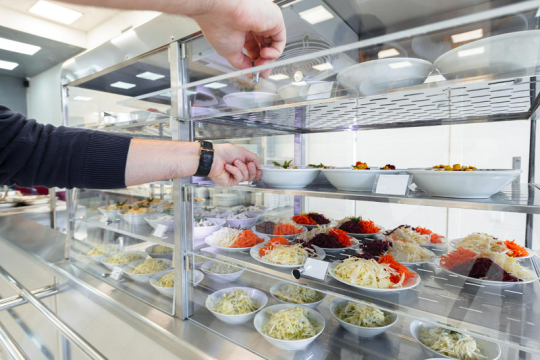
The adults of tomorrow are the children of today. Raising children’s awareness of sustainable food from the youngest age is a real challenge. One lever for action to reach a maximum number of children, whatever their social background: schools and school catering. In France, there is no shortage of initiatives: the “Fruit for recess” operation, the creation of school vegetable gardens, educational workshops and the like. But above all, the meals served in the canteen are governed by regulations and recommendations pertaining to their nutritional quality. And since 2019, following the Egalim law, canteens must offer a vegetarian menu at least once a week. This sends out a strong signal, even though it is still too early to measure the effects of this public policy scientifically.
Since 2019, canteens must offer a vegetarian menu at least once a week.
The school and school catering sector are also a major lever abroad. In Kenya, the schools and colleges permaculture programme –SCOPE Kenya– educates and prepares young schoolchildren and non-schoolchildren in twelve counties to understand nutritional value and food consumption for improved health, and to participate in agricultural production through school permaculture gardens. In Brazil, interventions in public primary schools teach children about healthy diets, a topic included in the curriculum. At the same time, school canteen cooks are also trained on the subject.

The Super School Canteen programme helps children choose food that is good for their health and good for the planet. The initiative is a joint endeavour with the city of Dijon and funded by Dijon Alimentation Durable 2030, a Territoire d’innovation programme. The project is led by the city of Dijon and supported by the scientific expertise of Sophie Nicklaus, INRAE Research Director at the Centre for Taste and Eating Behaviour (CSGA) at INRAE’s Burgundy-Franche-Comté centre in Dijon.
Acting on products
The last card to be played in order to accelerate dietary transitions: act on the supply side. While research is working on the development of new products, it also taking an interest in the development of new, healthier formulations, with less salt, sugar or fat in particular. This is the case, for example, with cold cuts. Although one option may be to simply reduce their salt and saturated fat content, the loss of sensory quality quickly puts a limit on it. A more promising option would seem to be the substitution of sodium chloride (salt) with potassium chloride, and of animal fats with vegetable oils containing unsaturated fatty acids, which are healthier. The results: researchers developed a dry sausage with a 30% reduction in salt and 60% reduction in saturated fatty acids without degrading the sensory quality. Public policies draw on a whole range of regulations or taxes that aim to encourage or require companies to change their products towards healthier formulations. In order to monitor changes in the nutritional composition of foods, INRAE and ANSES created the Food Quality Observatory (Oqali) in 2018, which allows reporting on the efforts made by the industry.
Steering production
And since our diets begin in the fields, public authorities are also endeavouring to steer production towards a rebalancing of animal/plant proteins. The French Ministry of Agriculture and Food thus initiated a 10-year national “plant protein” strategy in 2020. It aims to double the cultivated area of protein-rich plant species such as soya, peas, dried pulses, alfalfa and fodder legumes by 2030, in order to both rebalance diets and increase the protein autonomy of livestock animals. At the same time, this plan promotes the structuring of a local product offer for dried pulses.
There are therefore many levers to guide and accompany consumers towards healthier and more sustainable diets. If none of them seems strictly speaking more effective than another, the solution is probably to combine them and to rely on the complementarity between national and territorial policies, voluntary commitment of companies and changes in the behaviour of consumer-citizens.
Territorial food projects
Territorial food projects (PATs) were created as part of the National Food Programme (PNA) in 2016. The aim? To put the territories into action around food. Local authorities, farmers, associations, consumers and, more generally, all those concerned with food, are working together to relocalise our food.
Brigitte Nougarèdes, a sociologist at the Innovation joint research unit at INRAE in Montpellier, is taking a close look at the Pays Cœur d’Hérault project, winner of the PNA call for projects in 2019, and subsequently the TETRAA project (AgroParisTech, Fondation de France) which brings together 77 municipalities.
She highlights the areas of improvement needed to succeed in this “reconnection”:
→ facilitate access to agricultural land and buildings to diversify agricultural production;
→ support agricultural models that can contribute to the agro-ecological and food transition;
→ and improve or build coordination between production, processing and marketing, in order to structure sustainable local food chains.
At the same time, new forms of food aid must be devised to ensure access to quality food for all.
When animals are fed well, humans feel better
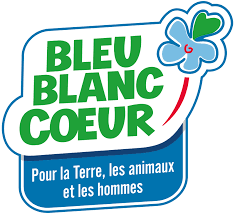
The Bleu-Blanc-Cœur association was created in 2000 with the support of INRAE and the idea that if animals are better fed and do better, humans could also benefit from it in terms of their own health. The ambition? To develop a value chain “from field to fork” with the founding principle of better feeding animals to improve the nutritional quality of the products they yield. The aim is to diversify and balance animal feed by including more plants, legumes and forgotten seeds that are rich in nutritional value (flax, lupine, peas, grass) and to respect animal welfare. Today, 7,000 farmers are involved in this sector, which has millions of consumers.
A 360° policy in Overseas France
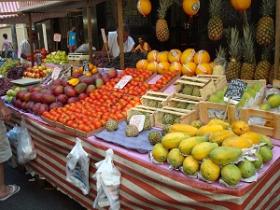
Overseas departments and regions are among the most exposed to diet-related chronic diseases. The prevalence of obesity, diabetes and hypertension is high, which can be explained by both particularly high social inequalities and eating habits marked by a high consumption of sugary drinks and a low consumption of fruit, vegetables and dairy products.
In 2020, a collective scientific expertise led by the French National Research Institute for Sustainable Development (IRD), for which Caroline Méjean (research director at INRAE) chaired the panel of experts, formulated 24 recommendations for action in order to implement the National Nutrition and Health Programme in the French overseas departments. These include encouraging the installation of equipment and the development of urban facilities to enable physical activity, the reformulation of products (such as the reduction of added sugar, sodium and saturated fatty acids), the introduction of vouchers and workshops to raise awareness on nutrition, the promotion of allotments to improve access to quality products, and the strengthening of local health care services.
-
Élodie Regnier
(Send email)
Author / translated by Alessandra Riva
Communications Department
